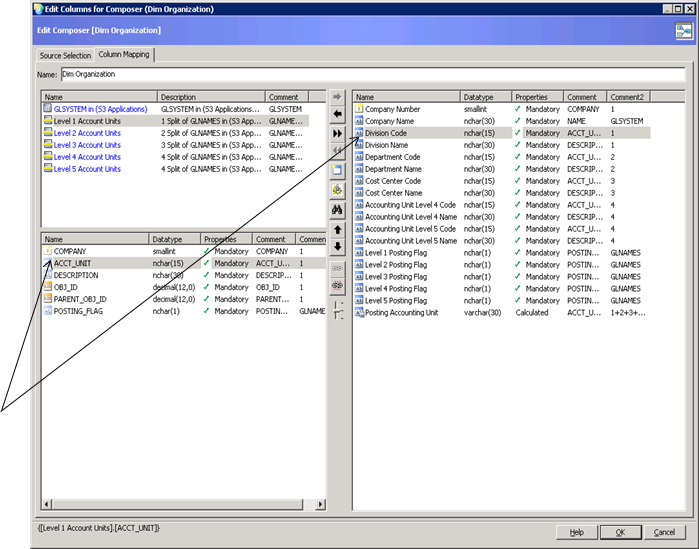Types of Composers
There are four types of composers. They are created in the same way, but they have distinct features and are used in different ways.
Basic Composers
A basic composer is a fundamental object in a complex modeling chain that is always initially based on source objects and source Splitters.
Nested Composers
A nested composer is a design component used to connect a basic composer to a dimension composer or a fact table composer. It can also be placed between other nested composers.
The use of a nested composer depends on how complex a dimension composer is. For example, if it includes aggregations, you usually need more than one composer to set up the table.
If you use only one composer aside from the dimension or fact table composer, that composer is called basic. If you use two or more composers, one of them is basic, another is nested, and the last one is the dimension or fact table composer.
Dimension Composers
These composers are the foundation for dimension tables. They include all data for the structures and hierarchies of the dimension.
Fact table Composer
This composer is the foundation for fact tables. It holds column calculations for the fact table.
Composer example
The best use of a composer object is one that uses the catalog’s object to object relationship definitions to create a new object definition.
You can create a new definition by using any of the related table columns.
